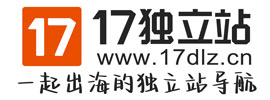纺织外贸,纺织外贸英语词汇专业单词
Textile foreign trade refers to the exchange of textile products between different countries. It involves the import and export of various textile goods, such as fabrics, clothing, and accessories. This global trade plays a crucial role in the economy of many nations and contributes to the growth of the textile industry.
Why is textile foreign trade important?
Textile foreign trade is important for several reasons:
- Market Expansion: It allows textile manufacturers to reach a larger customer base and expand their market beyond domestic boundaries.
- Increased Revenue: Exporting textile products can generate significant revenue for a country, contributing to its economic growth.
- Technological Exchange: Trade encourages the exchange of knowledge and technology between countries, leading to innovation and improvement in the textile industry.
- Employment Opportunities: The textile foreign trade sector creates job opportunities in manufacturing, logistics, marketing, and other related industries.
What are some key terms in textile foreign trade?
In order to navigate the world of textile foreign trade, it's important to be familiar with certain key terms and vocabulary. Here are a few:
- Export: The process of selling textile products to another country.
- Import: The process of buying textile products from another country.
- Tariffs: Taxes imposed on imported or exported textile goods, which can impact the cost and competitiveness of these products.
- Quotas: Limits on the quantity of textile products that can be imported or exported.
- Customs: The government agency responsible for regulating and inspecting international trade, including the import and export of textiles.
- Trade Agreement: A formal agreement between two or more countries to facilitate trade by reducing or eliminating barriers such as tariffs and quotas.
What challenges does textile foreign trade face?
Textile foreign trade faces various challenges:
- Competition: The global textile market is highly competitive, with countries vying to offer the best quality products at competitive prices.
- Regulations: Each country has its own regulations and standards for textile products, which exporters need to comply with.
- Logistics: The transportation and logistics involved in international trade can be complex and costly, especially when dealing with large quantities of textile goods.
- Currency Fluctuations: Exchange rate fluctuations can affect the profitability of textile foreign trade, making it difficult to predict and plan for future revenues.
- Intellectual Property Protection: Protecting intellectual property rights such as patents, trademarks, and designs is crucial in the textile industry to prevent counterfeiting and unauthorized copying.
Conclusion
Textile foreign trade is a dynamic and important sector that contributes to the global economy. Understanding the key terms and challenges involved in this trade is essential for textile manufacturers, exporters, and importers to thrive in this competitive industry.
